Editor Talks | Quaderns
editor talks | paula v. álvarez
Since 2013 architect and editor Paula V. Álvarez, head at Vibok Works editorial practice, runs Editor Talks: a commendable cycle of interviews to innovative architecture editors. Being both Paula and I interested in the dynamics that are actually shaping, and deeply transforming, the geography of architectural communication (where she’s more focused on books, magazines, fanzines and webzines, I’m more into webzines, blogs and social media), and being that we both started to run, almost at the same time, a cycle of interviews on these themes, we have decided to join forces and publish our interviews on both Vibok Works and OII+. The following interview, first published in November 2014, is addressed to Ethel Baraona, Guillermo López, Anna Puigjaner and José Zabala, editors of Quaderns.
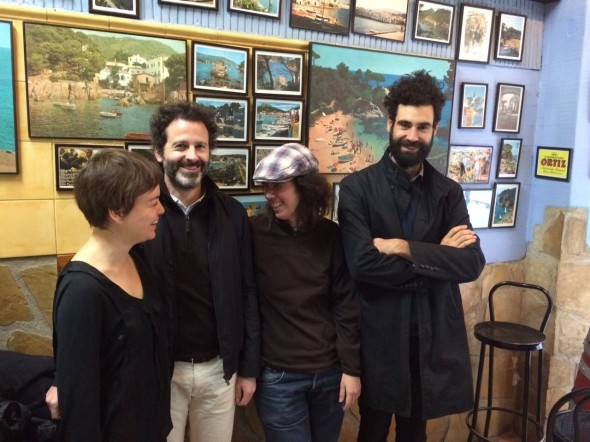
Quaderns is the journal of the Architects Association of Catalonia. With 265 issues to date, it is one of the most long-standing and well-established architecture and urbanism journals in Spain. Since Quaderns was founded in 1944 it has been steadily around, with successive editorial projects leaded by various editorial teams selected through competitions. Ethel Baraona, Guillermo López, Anna Puigjaner and José Zabala are the engine of Quaderns’ present editorial stage, together with Mario Ballesteros, who was part of the team along the three first issues.
The five thematic issues it comprises —After the party (1933), Para-infrastructures (1971), Vacuum Preserved (1956) + Annual book (2011) and House and Contradiction (1967)—, and their upcoming issue on Architecture and Politics, do embrace a range of significant inputs for architecture practitioners and seek to capture new ways of thinking when facing architectural problems. Their ability to cover through concrete topics a wide spectrum of contemporary debates and their concern with the public problems that architecture faces, has awakened international interest, leading to collaborations with platforms as Thinkspace or Volume Magazine. We’ve had the enormous pleasure to talk with the group about their concerns and the editorial strategy that they have built for Quaderns.
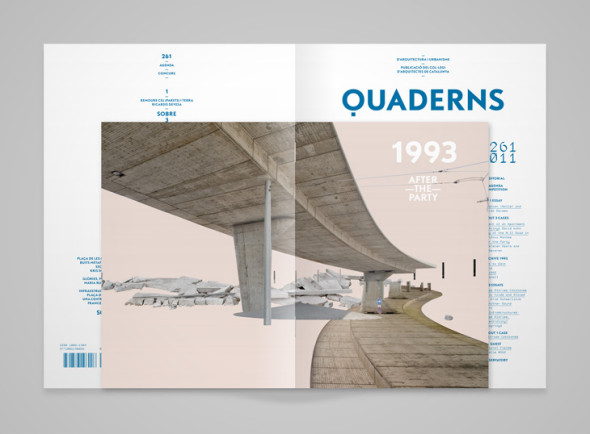 Quaderns #261: “After the party (1993)”
Quaderns #261: “After the party (1993)”
PAULA V. ÁLVAREZ: Quaderns Journal has been pioneering in addressing the role of architecture practitioners in the cultural and social domains of the city, providing a fruitful crossing point between local culture and international debates. Being in continuity with this tradition, your present stage has come up with many original twists that transform Quaderns in something completely unique, from the treatment of contents to the playful presentation or the editorial ecosystem and networks around the journal. What made you get together to start a project like this? I am also curious about your references and the influences on you.
QUADERNS: When the last open call for Quaderns’ editorial board was announced, we presented a proposal in order to bring together several topics that interested all of us. Looking back, we can probably say that there was —and there is— a strong emphasis on theory, which probably unifies many of our concerns. Of course we also had in common other things, including a passion for collecting magazines, papers, books, etc. Although all of us had previous experience in the publishing world, only Mario Ballesteros, who edited with us the first three issues and had worked formerly in ACTAR, and Ethel Baraona, who leads her own publishing house (dpr-Barcelona) with Cesar Reyes, had worked as publishers before. The truth is that initially we did not know each other that much, but we have worked in an extremely complementary way.
Regarding our references, we all share a huge empathy with many of the things that happened in the 60s and 70s, perhaps due to the affinities with the present, but avoiding a nostalgic approach. What interested us the most was the deep importance and impact of printed architectural fanzines, in which thoughts and works were very closely linked and the weight of built architecture was played down. We believe in experience as an attitude, in that sense, we claim that architecture can be produced in many ways. Without doubt it must be understood as a form of cultural production in its broadest sense.
We are a fragment of a worldwide editorial renaissance and effervescence that transcends the local. Despite their heterogeneity, initiatives such as Archizines have highlighted a parallelism between the present and what was going on four decades ago (see the project Clip, Stamp, Fold by Beatriz Colomina), when even magazines supported by institutions could be understood under the logic of fanzines. Emulating Kafka’s title, we often think of a slogan for this Quaderns: “Desire of being a fanzine”, perhaps to feel some lightness despite being linked to an institution.
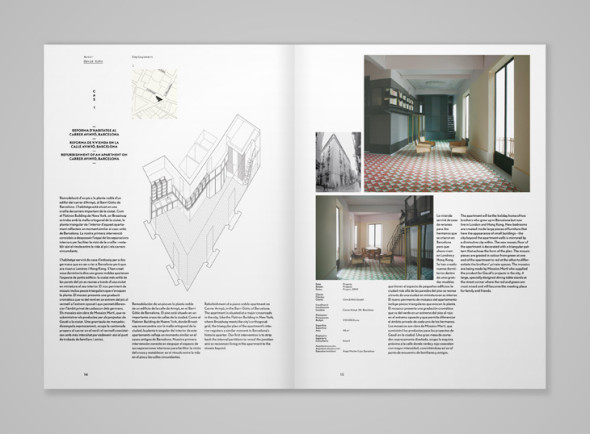 Quaderns #261: “After the party (1993)”
Quaderns #261: “After the party (1993)”
P. A.: The re-definition of the architectural expertise —the knowledge and work it involves— is one the many debates emerging from Quaderns’ pages. In your words, the publication unfolds “without distinction between text, project or executed work”. Your approach records a significant shift that’s currently happening, as the definitions of the borders of the field of architectural practice, before challenged by encounters with other fields, have started to be intensely tested internally with the diversifying of forms of practice, partly emerged to face the financial crisis. How do these concerns take shape in the pages of Quadern? Borrowing Colomina’s statement for publications, do you see Quaderns as a site of architectural production itself?
Q.: Of course. We cannot keep thinking about architecture as a discipline based on out-dated models from one century ago. We love building architecture—we do it at our offices—but we also believe that the act of materializing buildings is not the only way to deal with architecture. Cleavage of theory and practice—including its academic seizure or the mépris that some architects show towards it—can be understood as part of a broader process of specialization that undermines the critical and operative capacity of the architect. This process is being extended to almost any field of society. The disappearance of humanities degrees is only a tiny part of that process of control and fragmentation.
In that sense, the architect has lost weight in broader areas such as urbanism, which has fallen increasingly in the hands of certain agents only interested in the city understood under economic parameters. Of course we must be aware of our limitations as a discipline, but we also should be able to play a role which liberates us from being mere executors. The theorein is—even etymologically speaking—the act of raising our heads and looking around. It is great that we can as architects solve amazing constructive details, but we can’t forget what is happening outside, our compromise towards what is beyond the discipline itself.
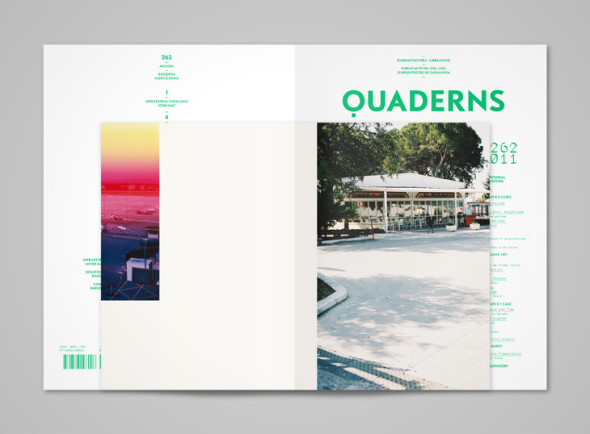 Quaderns #262: “Para-infrastructures (1971)”
Quaderns #262: “Para-infrastructures (1971)”
P. A.: I am also intrigued about your interest in retaking and re-covering (borrowing music terms) what already exists (discourses, works, contents) instead of “building” everything anew, something which is perhaps connected to an emerging sensitivity towards the existing (heritage, history) that can be found in architectural interventions today. This is explicitly explored in Quaderns #263 Vacuum Preserved (1956), and also in Quaderns #264 special issue, Annual book (2011), which rescues 50 already published works in previous bookyears. What is really at stake in this editorial logic of retaking and recovering?
Q.: Besides what you mention, we recover fragments of Quaderns’ archive in every issue, including images, texts, etc, and analyze them from a contemporary point of view. We are interested in history in an operative way, away from historicism. We try to depart from a critical point of view in order to avoid the temptation of mythologizing the past or falling under the influence of an aesthetic fascination for its “ruins”. In that sense, we play the idea of novelty down—not of the new, at least as the philosopher Boris Groys refers to it—and submit it to the idea of narrative. Nevertheless we do not face the use of the past with a prête-à-porter attitude. We feel far away from certain referential postmodernism that saw in a partial and decontextual use of the past a form of legitimation for its own purposes. It has to do with understanding present by means of the past.
In any case, the critical understanding of the past allows avoiding mistakes and downplays the current state of things. It is legitimate that each époque makes a specific use of historiography or enhances certain readings of the past. As legitimate as it is that the next époque will destroy or reconfigure many of the myths that were woven before. It is part of an unresolved but necessary dialectic between the present and the past. Regarding the relationship of this process with practice, we prefer a literary approach to a literal one. We prefer rescuing attitudes than isolated past forms or intact fragments detached from their context. Nostalgia and retromania (see Simon Reynolds) are very samey!
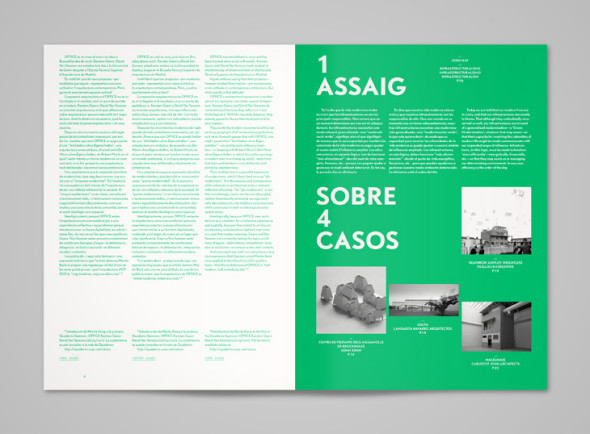 Quaderns #262: “Para-infrastructures (1971)”
Quaderns #262: “Para-infrastructures (1971)”
P. A.: It is worth to look in detail a particularly intriguing element of present Quaderns like the inclusion of an anachronistic key-date in every title. I would say this feature is openly criticizing the anxiety for novelty that generally dominates cultural media at present. You also have the ‘Archive’ section, which rescues a past episode under the thematic proposed, and one can find in Quaderns’ pages an interest in exploring architecture’s relation with diverse temporal frameworks. Could you tell us more about these editorial strategies?
Q.: The very idea of anachronism has a dual function. On the one hand, it allows us emphasize the narrative character of issues. The mix of image and text, and the simultaneous allusion to the present and the past allow presenting a multifaceted image of the same subject, yet maintaining some specific limits.
Anachronism is, moreover, an element that interests us from a historiographical point of view. It refers to an understanding of history and architecture paradigms closely related to characters such as Benjamin or Carl Einstein, for whom everything can have a second chance and modify its meaning, its interpretation. Anachronism resists the flow of time and challenges us with its presence.
A word and a number feedback each other and at the same time broaden the field of meaning so that the interpretation of the topic of the issue remains much more open. This also introduces thus the time factor. It also allows us a connection to the archive section or another historical moment. Sometimes we have chosen parallelisms stressing or forcing frictions between the topic we deal with and a reference of the past. Normally we choose dates that let us talk of something contemporary by means of a picture, a text, etc. Thus the novelty as an end in itself is played down while it forces renewed readings of the past.
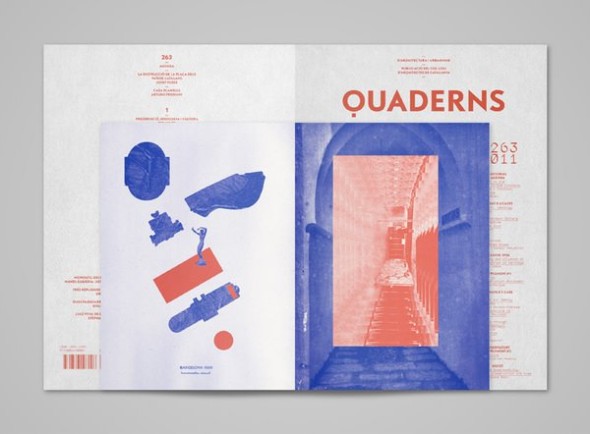 Quaderns #263: “Vacuum Preserved (1956)”
Quaderns #263: “Vacuum Preserved (1956)”
P. A.: Let’s talk about the clear but rich structure of your editorial project for Quaderns. Every issue is organized in five different complementary sections: you have the visual essay, the editorial, the observatory and the archive, and then an essay that explores different works (1 over X) and different pieces that explore one work (X over 1). How did you come up with this structure?
Q.: We live immerse in tons of information. Internet is a real vomitory of references and images rapidly passing by. Amid this hotchpotch, the publisher’s duty is to formulate a statement departing from a lot of fragments and give them meaning or at least suggest its possibility to the reader in order to allow him to form his own perspective. The structure of our Quaderns has followed precisely this narrative character. We were interested in the fact that projects were unified by a text, with all the imaginable contradictions and similarities that it implies.
P. A.: Quaderns’ light and handy stapled format, with two different scaling in the cover, as well as the type of paper, introduce many fresh elements in an institutional journal. The materialization in collaboration with TwoPoints evokes a dynamic relation with architectural concepts. I particularly enjoy the thickened “façade”, turned into an interior, with many layers of information at once. You cannot consume it in one go; you need to take your time to go through even before opening it. Could you comment on Quaderns’ design and how does it relate to edition?
Q.: Quaderns’ design is an intrinsic part of our editorial concept. We work closely with the designers, TwoPoints, from the first minute. From these discussions emerges the visual essay, the small outer sheet that reflects by means of images on the contents of the issue. We force a kind of ekphrasis where the image can be clearly narrative and even the text—visually understood—and typography are part of the history we explain. The image itself is constructed and design always follows the parameters that give an internal order to the journal, as it happens with the invariant Sections of the magazine. The format unifies seemingly different things and sometimes causes unexpected readings.
For its part, the clip is almost a manifesto, it transmits a raw idea. We like its relationship with fanzines and how it refers to its production. Besides, it is a tribute to the early days of Quaderns directed by Josep Lluís Mateo, which represented a reversal of the magazine and its internationalization. The design is also narrative. Form and content are inseparable here. Since the design and contents are based on a clear structure within these predefined limits, designers have leeway. We finally adjust the results together so that everything works fine.
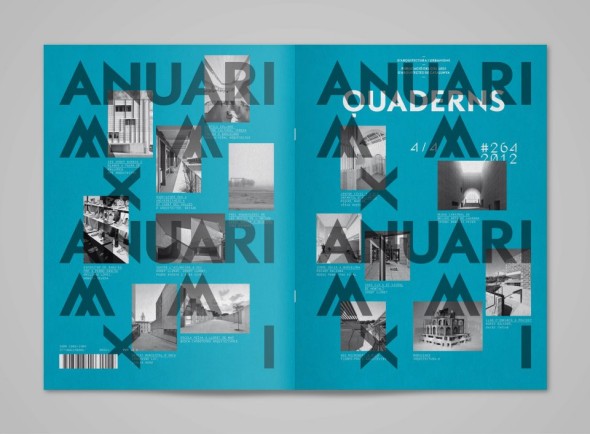 Quaderns #263: “Annual book (2011)”
Quaderns #263: “Annual book (2011)”
P. A.: Other strong point of your project is quaderns.coac.net, a digital appendix to each print issue that serves as a complementary instrument for both generating and distributing content. The site includes books reviews, shared documents, anticipation of articles and free pieces. You also have the Quaderns sessions as an asset. How does this editorial ecosystem work?
Q.: The digital platform has been critical for several reasons. Firstly to the extent that it has strengthened local and international linkages. Moreover, since the scope of the printed edition is limited. Either way we love to see how the web platform allows content to expand and collect debates that appear suggested in the printed format of the magazine. The transition between the physical and the digital is natural and productive, many synergies are created and the traditional unidirectional cycle is broken.
The topic of each issue is always linked to the present. We have addressed the problem of housing, infrastructures or the postcrisis situation. That makes different positions arise and allows debate. Ethel Baraona has a specific gravity thereon. It’s funny how the old sections devoted to letters from readers have been transformed dramatically thanks to social networking and discussions about each topic which are continuously open.
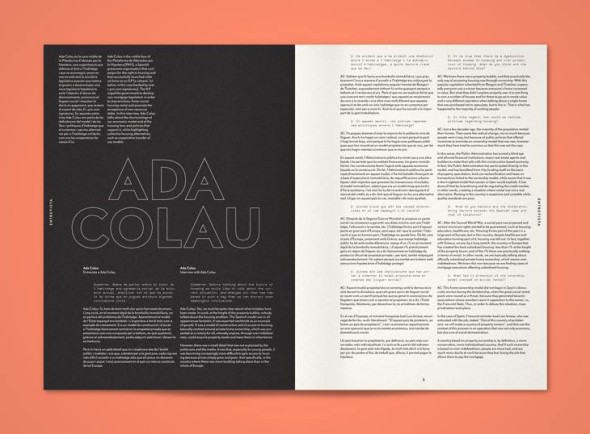 Quaderns #264: “House and Contradiction (1967)”
Quaderns #264: “House and Contradiction (1967)”
P.A.: Currently you are working in the next and last issue, dedicated to architecture and politics. Can you tell us more about it? Now that this period is about to finish, have you fulfilled your dreams?
Q.: We will close our series with a final issue focused on politics, on which we will develop some of the topics which were suggested in our previous issue, entitled “House and Contradiction (1967)”, where we highlighted the connections between the small scale of the domestic and the macro scale of politics. This last issue will focus on public space as the place where collective celebration of the political can take place. If the first issue was entitled “After the party” and proposed an analysis of the readjustments of discipline facing its new conditions, the latter claims for a regeneration of our political institutions and the importance of public space and the role architecture can play on that process.
Indirectly—almost in a metaphorical way—we think of the end of this period in a cheerful and festive way, mainly positive. We need to redefine and expand the discipline and embrace thus new models that do not repeat outdated clichés from the past. Because of that, history and theory are so important in our approach. We should not lose sight of our social and political role, and exercise our critical capacity as architects. It is legitimate to claim the renaissance of the craftsman, but we should avoid mystifications and shouldn’t forget, being aware of our own limits, that we are also humanists, not mere executors.
P.A.: I completely subscribe to your statement; besides, I think we have to be careful not to lose our legacy in this much needed process of change. Well, thanks for this conversation. It was a real pleasure to talk to you and to learn more about Quaderns. I am really looking forward to reading your upcoming issue and hope to see more of your editorial adventures coming soon. Congratulations for your work!
Barcelona / Seville / 2014 -2015.
Questo sito usa Akismet per ridurre lo spam. Scopri come i tuoi dati vengono elaborati.


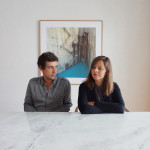
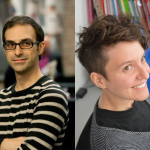




Lascia un commento